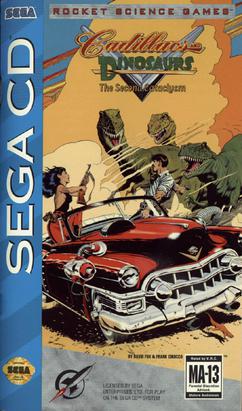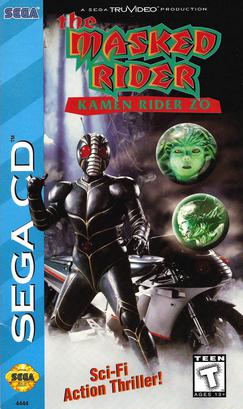
Independence Day is a 1996 American science fiction action film directed by Roland Emmerich, written by Emmerich and the film's producer Dean Devlin. The film stars an ensemble cast of Will Smith, Bill Pullman, Jeff Goldblum, Mary McDonnell, Judd Hirsch, Margaret Colin, Randy Quaid, Robert Loggia, and Vivica A. Fox. The film follows disparate groups of people who converge in the Nevada desert in the aftermath of a worldwide attack by a powerful extraterrestrial race. With the other people of the world, they launch a counterattack on July 4—Independence Day in the United States.
Full-motion video (FMV) is a video game narration technique that relies upon pre-recorded video files to display action in the game. While many games feature FMVs as a way to present information during cutscenes, games that are primarily presented through FMVs are referred to as full-motion video games or interactive movies.

Blade Runner is a point-and-click adventure game developed by Westwood Studios and published by Virgin Interactive for Microsoft Windows, released in November 1997. The game is not a direct adaptation of the 1982 Ridley Scott film Blade Runner but is instead a "sidequel", telling an original story, which runs parallel to the film's plot, occasionally intersecting with it.

Avalon Interactive Group, Ltd., formerly known as Virgin Interactive Entertainment, was a British video game distributor based within Europe that formerly traded as the video game publishing and distributing division of British conglomerate the Virgin Group.
The Control-Vision is an unreleased video game console developed by Tom Zito. It is notable for using VHS tapes rather than ROM cartridges, prompting the creation of game content which survived on into much more advanced CD-ROM platforms.
An interactive film is a video game or other interactive media that has characteristics of a cinematic film. In the video game industry, the term refers to a movie game, a video game that presents its gameplay in a cinematic, scripted manner, often through the use of full-motion video of either animated or live-action footage.

Star Wars: Rebel Assault II: The Hidden Empire is a 1995 video game developed by LucasArts. It is the sequel to Star Wars: Rebel Assault, set in the Star Wars expanded universe. It is played as a rail shooter; the player proceeds down predetermined paths, but has the ability to control aiming, shooting, and dodging. The player character, Rookie One, pilots ships such as a YT-1300 Corellian Transport, a B-wing, and a Y-wing, and encounters new enemy ships, including TIE Interceptors. They uncover, and eventually disable production of, a new TIE variant known as the TIE Phantom, which has the ability to cloak.

Resident Evil is a 1996 survival horror game developed and published by Capcom for the PlayStation. It is the first game in Capcom's Resident Evil franchise. Set in the fictional Arklay mountain region in the Midwest, players control Chris Redfield and Jill Valentine, members of the elite task force S.T.A.R.S., who must escape a mansion infested with zombies and other monsters.

Die Hard Trilogy is an action video game developed by Probe Entertainment and published by Fox Interactive in North America and distributed by Electronic Arts in Europe for the PlayStation, Sega Saturn and Microsoft Windows. The game is based on the first three installments of the Die Hard series of action movies, with each film entry being represented through a different gameplay genre.

Toonstruck is a graphic adventure video game developed by Burst Studios, published by Virgin Interactive Entertainment and released in 1996 for DOS. The game features hand-drawn imagery and animated characters, but the protagonist Drew Blanc is represented as a video-captured live action character interacting with the cartoon world around him. In the game, Blanc is transported into the cartoon world he created while suffering from a creative block. Blanc is accompanied by his animated sidekick Flux Wildly.

Cadillacs and Dinosaurs: The Second Cataclysm is a rail shooter video game made by Rocket Science Games based on the comic book Xenozoic Tales. The game was originally released in 1994 for Sega CD and later IBM PC compatibles.

Fox Interactive was an American video game publisher based in Los Angeles, California. The company published games based on 20th Century Fox properties, yet also published several original titles, such as Croc: Legend of the Gobbos.

The Muppet CD-ROM: Muppets Inside is a 1996 video game based on The Muppets franchise produced by Starwave for Windows. The title is a play on Intel's advertising slogan, "Intel Inside". The game's plot consists of several Muppets characters getting trapped inside a computer, and Bunsen sending Kermit and Fozzie Bear into the computer to rescue them.
Independence Day is a franchise of American science fiction action films that started with Independence Day in 1996, which was followed by the sequel, Independence Day: Resurgence in 2016. The franchise revolves around extraterrestrials invading Earth and seeking to eradicate mankind while the remaining human resistance uses everything at their disposal to defeat the invaders and take back the planet. Now considered to be a significant turning point in the history of the Hollywood blockbuster, the original film was released worldwide on July 3, 1996, but began showing on July 2 on limited release as a result of a high level of anticipation among moviegoers. The film grossed over $817.4 million worldwide, becoming the highest-grossing film of 1996 and, briefly, the second-highest-grossing film worldwide of all time behind 1993's Jurassic Park. Currently, it ranks 69th on the list of highest-grossing films, and was at the forefront of the large-scale disaster film and sci-fi resurgence of the mid-late 1990s. The film won the Academy Award for Best Visual Effects and was nominated for the Academy Award for Best Sound Mixing.

Disney's Animated Storybook is a point-and-click adventure interactive storybook video game series based on Walt Disney feature animations and Pixar films that were released throughout the 1990s. They were published by Disney Interactive for personal computers for children ages four to eight years old. Starting from 1994, most of the entries in the series were developed by Media Station. They have the same plots as their respective films, though abridged due to the limited medium.

Disney's Activity Center is a series of PC and PlayStation games released by Disney Interactive with each title consisting of various activities and minigames to be completed, using aspects of their licensed property.

Loadstar: The Legend of Tully Bodine is a video game developed and published by Rocket Science Games for the Sega CD in 1994 and MS-DOS compatible operating systems in 1995.

The Masked Rider: Kamen Rider ZO is a video game developed by Telenet Japan and published by Toei Video in Japan and Sega in North America for the Sega CD.

Johnny Mnemonic: The Interactive Action Movie is a 1995 point-and-click adventure game published by Sony Imagesoft for Macintosh and Windows. It was released as a tie-in to the film of the same name and developed by Propaganda Code, the gaming division of Propaganda Films. Filming took place at the Ambassador Hotel in Los Angeles, California for fifteen days.















